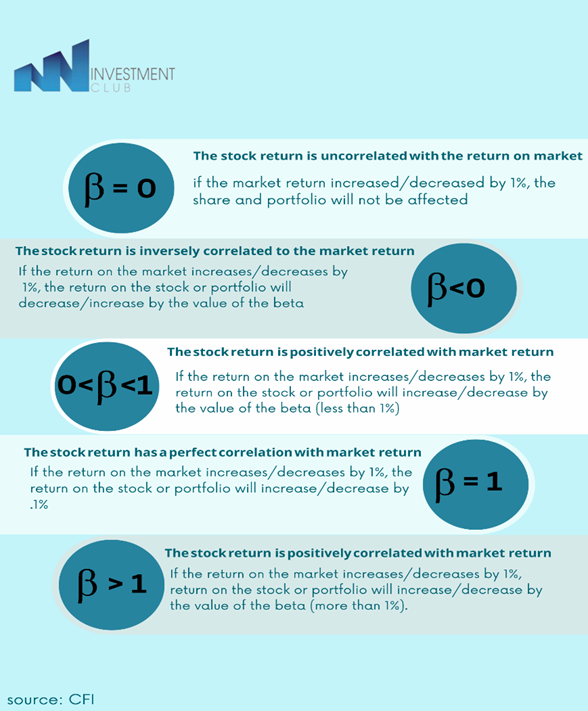Managing stock risks

Everyone knows that it is not quite possible to make an investment without any risk, however investing in the stock market contains a relatively high degree of risk, which is the main reason why people tend to avoid investing in stocks. But just as we know that there is no investment without risk, we must know that there is no risk without ways to manage it, and this is what we will be explaining.
Before learning about the various ways to manage risk, we must know what are these risks?
There are two basic types of risk:
1- Systematic risk / market risk
Stock value has the potential to rise or fall due to market conditions that are caused by uncontrollable factors affecting the entire economy, such as inflation and political events.
This type of risk includes:
a. Market risk
The probability that security prices will move in the same direction. Meaning that if the market is going down, even the best performing companies will go down if they are moving in the same direction as the market. In fact, this type holds two-thirds of the systematic risk.
b. Exchange rate risk
Which is caused by the change in value of foreign currencies. This type only affects companies that have foreign exchange transactions, such as export companies or multinational companies.
c . political risk
Danger of governments declaring war, Iraq's invasion of Kuwait for instance, where the total drawdown of the S&P500 index was -16.9%, which took 189 days until recovery. \ This type of risk cannot be removed by diversifying assets in the portfolio, because it affects the economy as whole, therefore all assets will be affected. This type of risk can be measured using beta, which is a measure of the extent to which the security or investment portfolio is related to market movements, meaning the extent to which the return on the security rises or falls for every 1% increase or decrease in return of the market index.

2- Unsystematic risk / Firm-specific risk
The decisions of the company and its reputation, their plans in joining a new market or another organization. The risks that are associated to a particular company or sector; this type of risk does not affect the economy as whole. Such as the emergence of new competitors, or a change in the company's management, this type of risk can be reduced by diversifying assets in the portfolio. as opposed to systemic risk.
This type includes several sub-types:
a. Business risks
Internal and external factors that could reduce the company's revenues or hinder the company from reaching its financial goals. such as a change in consumer’s taste or new legislation.
b.Financial risks
Which are related to the company's capital structure, as debt and equity ratios must be ideal, so that the company can continue to grow and fulfill its obligations. Whereas, if the capital structure is weak, this will lead to destabilizing revenues and cash flow, and the company will be prevented from trading.
C. Operational risks
Operational risks that result from unexpected or negative events, such as supply chain breakdowns.
d. Strategic risk
The risk that an event may interfere with the company business model, such as a failed merger or a product failure.
g. Legal risks
Change in laws that may harm the company.

As we have mentioned earlier, there is no risk without ways to manage, so how do equity investors manage these different types of risks?
We have already mentioned one of the risk management strategies, which is asset diversification, which is based on not investing in a single asset because it will lead to an increase in the rate of concentration risk.
If this asset goes down all its money will be lost. Distribute the Investment among stocks, bonds, real estate, etc., and then distribute the money that you have allocated for each asset to different companies, for example, the money that you have allocated to invest in stocks, distribute it to different sectors, and then to different companies in the same sector.
A lot of day traders follow what is called the one percent rule. This general rule says that you should never put more than 1% of your capital into a single trade.
For example, if you have $10,000 in your investment account, your investment should not exceed $100 in any security. This strategy is popular for traders with accounts under $100,000 with some even going up to 2% if they can afford it.
Asset diversification is concerned with distributing risk among assets, hedging is concerned with taking measures to protect an investment. Some assets have an inverse relationship, meaning that if the return on share “A” decreases, the return on share “B” will rise, and the loss will be covered. An example of this is the VIX index, which is designed to rise when markets are volatile.
One of the ways that could help in reducing risk is to know the stock market stimuli, which is the information that affects the movement of stock prices in addition to news and the latest opinions of financial analysts. which could also help with finding the best trading opportunity. If you are someone who cannot tolerate risk, it's best to stay away from speculation and go for long-term investing. In long-term investing, it is advised to invest in leading stocks that are the weightiest in the market, or the most market value. It is important that you re-evaluate and re-balance your investments every quarter.
Finally, by using these several strategies, investors can minimize the negative effects of unexpected market fluctuations and reduce their exposure to any of the different types of risk.
Resources:
Investopedia
CFI
https://www.etoro.com/stocks/risk-management/
prepared By:
Mayar Alromih
Hanan Alshawy
Layan Alsubaie
Aljawhara Alotaibi